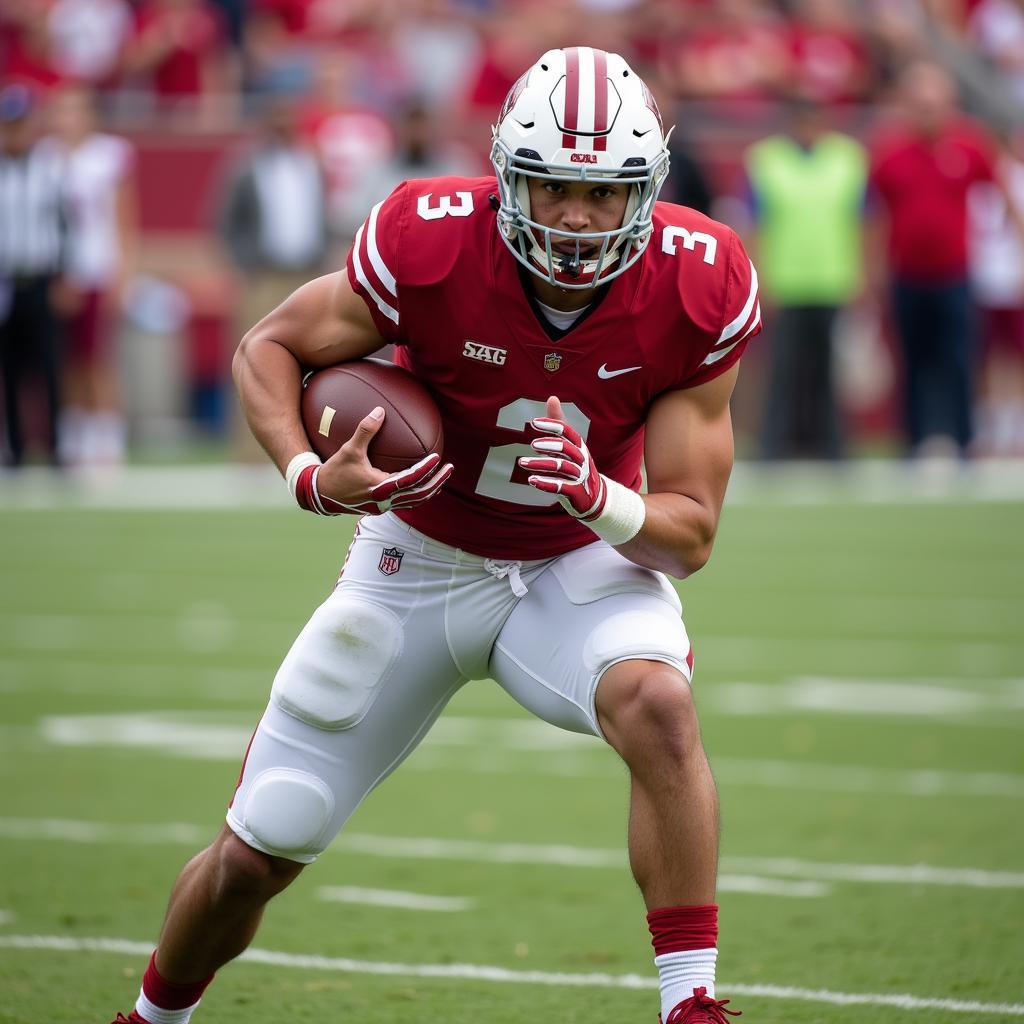College football is a sport steeped in tradition, and one of the most noticeable differences from the professional game is the absence of mandatory knee pads for players. While NFL players are required to wear knee and thigh pads, college athletes have the option to forgo this protection, and many choose to do so. This has led to a debate within the sport about whether this tradition of “toughness” outweighs the potential risks to player safety.
 College Football Player Without Knee Pads
College Football Player Without Knee Pads
The Case for Freedom of Choice
Proponents of allowing college players to choose whether or not to wear knee pads argue that it allows athletes to prioritize comfort and mobility. Knee pads can be bulky and restrictive, potentially hindering a player’s range of motion and speed on the field. In a fast-paced game like football, where every second counts, even a slight disadvantage in agility can make a difference. Additionally, some players argue that knee pads can actually increase the risk of certain injuries by altering their natural running and tackling mechanics.
There’s also a strong sentiment among many players and fans that going padless is a badge of honor, a symbol of toughness and resilience. This tradition has been passed down through generations of college football players, contributing to the grit and determination associated with the sport.
The Growing Concern for Player Safety
However, the argument against mandatory knee pads in college football has been facing increasing scrutiny in recent years, particularly as awareness of sports-related injuries and long-term health consequences continues to grow. The human knee is a complex joint vulnerable to a range of injuries, from ligament tears to cartilage damage. The forceful impacts inherent in football collisions can put immense stress on these structures, potentially leading to debilitating injuries that could have long-term implications for a player’s health and future career prospects, both on and off the field.
Medical professionals and researchers have extensively documented the prevalence and severity of knee injuries in football, emphasizing the protective benefits of knee pads. Studies have shown that knee pads can significantly reduce the risk of fractures, contusions, and lacerations, particularly in younger athletes whose bodies are still developing. While knee pads may not completely eliminate the risk of all knee injuries, they provide a crucial layer of protection that can mitigate the severity of impacts and potentially prevent long-term damage.
“The evidence is clear,” says Dr. Emily Carter, a sports medicine physician specializing in knee injuries. “Knee pads significantly reduce the risk of impact injuries to the knee. In a sport as physically demanding as football, where players are constantly colliding at high speeds, it’s crucial to prioritize player safety by utilizing every available protective measure.”
A Call for Change?
The debate over mandatory knee pads in college football reflects a broader conversation happening across many sports about balancing tradition with player safety. While the desire to preserve the unique culture and history of college football is understandable, the potential cost of clinging to outdated practices is becoming increasingly difficult to ignore.
 College Football Player Wearing Knee Pads
College Football Player Wearing Knee Pads
As research continues to highlight the efficacy of knee pads in reducing injury risk, and as more athletes prioritize their long-term health, the pressure on the NCAA to reconsider its stance on mandatory knee pads is likely to intensify. Whether the organization will ultimately prioritize player safety over tradition remains to be seen, but the conversation is far from over.





